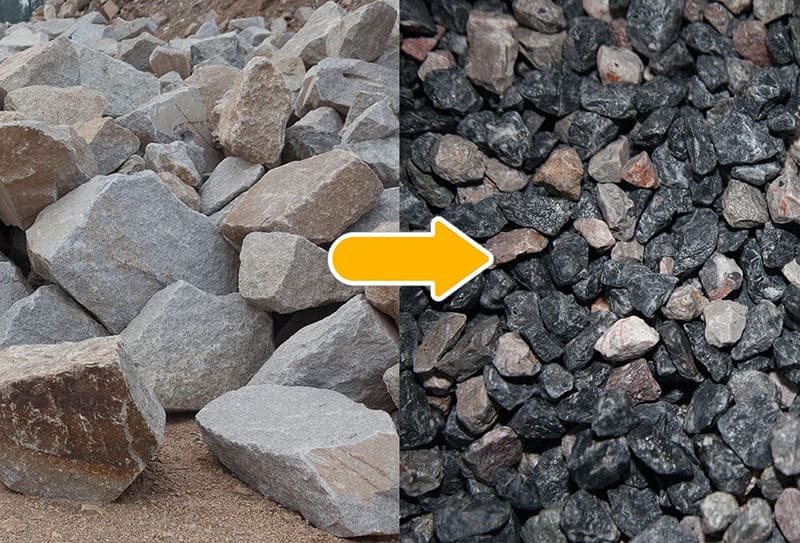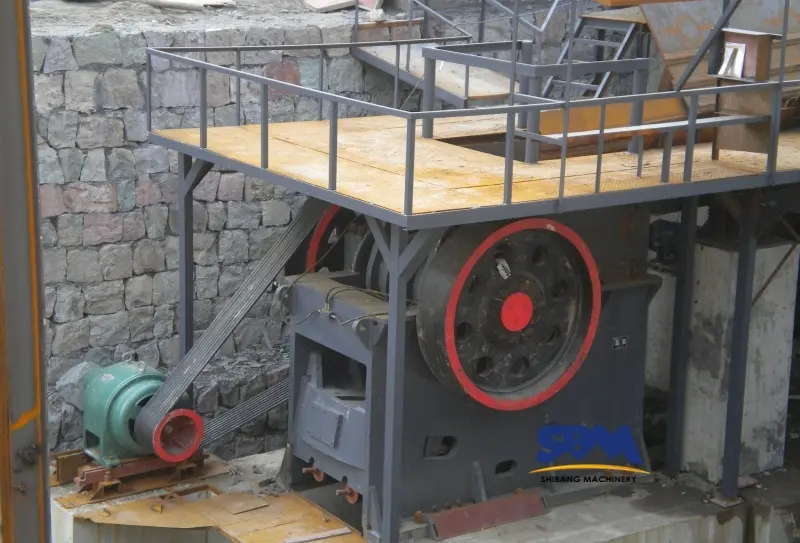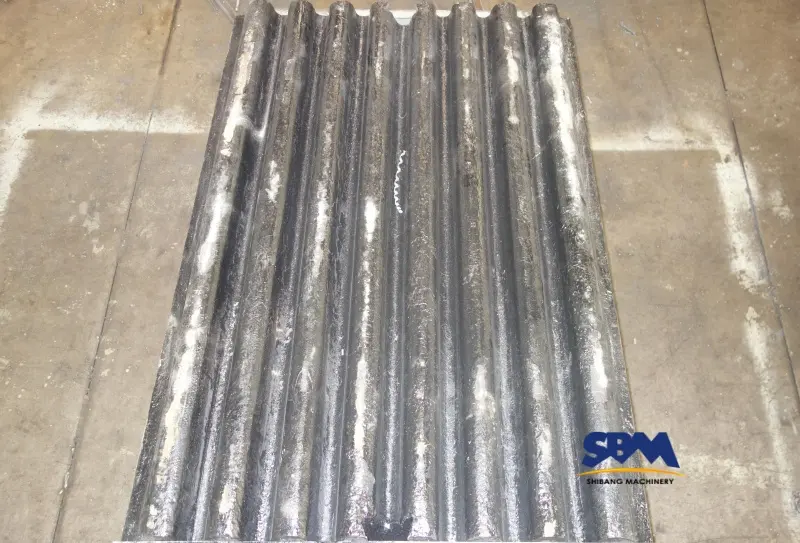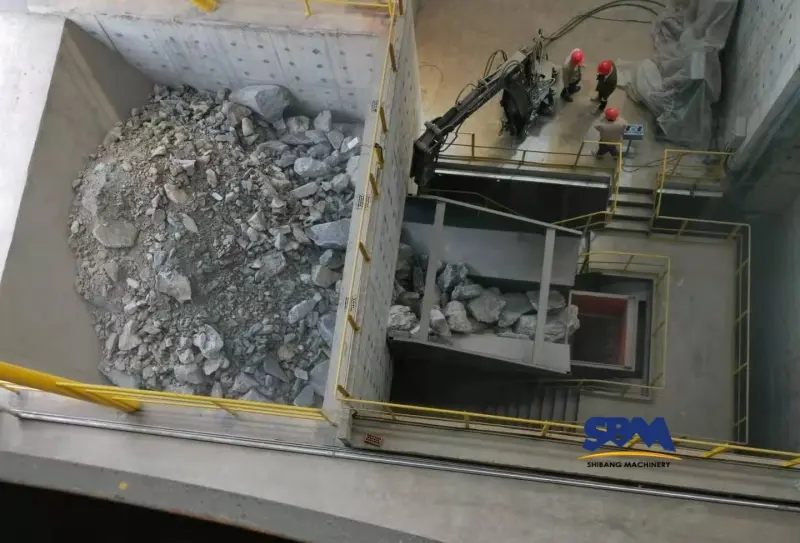Correo electrónico: [email protected]
Cómo triturar rocas? Intercambio de información simple
How to crush big rocks into small ones is a simple yet complex problem. Aquí, we introduce several methods of breaking rocks. Of course, which method you choose depends largely on the hardness and size of the rock you want to break.

3 methods of crushing rock
The first method: hammering
This method is more suitable for smaller stones. We place rocks on a solid surface, such as a concrete slab or a thick sheet of metal. Then we hit it hard with a hammer until it broke into smaller pieces. But it has the potential to be everywhere. Consejos: Wear goggles and work gloves to protect yourself from flying debris.
The second method: smashing with a sledgehammer
This method is more suitable for rocks with slightly larger size but soft or moderate hardness. This method requires more strength and effort than using a mechanical shredder.
The third method: mechanical crusher
This method is suitable for rocks with large size or high hardness. Some common harder rocks (granito, limestone and basalt) require a crusher, como a universal jaw crusher. You can also crush other different types of stone, such as natural stone, but they may require a mobile rock crusher or more powerful crushing equipment to crush.
What type of rock can a crusher crush?
The ‘hardnesses’ of stones vary, i.e., some stones are harder than others. Just consider how strong diamond is: hard rocks like granite have a stronger structure and are tougher to break up! Hard rock is excellent for construction materials since it is so robust, but when it comes to crushing, this implies that much more energy and force will be required to break them down. Sandstone and limestone are two types of soft stone that are broken more readily. No matter what kind of rock, we can use tools to crush it into different sizes of crushed rock for different purposes.
- Granito: A hard, dense igneous rock composed primarily of quartz, feldespato, and mica.
- Basalto: A dark volcanic rock characterized by a fine-grained structure and high iron content.
- Caliza: A sedimentary rock composed mainly of calcium carbonate. Its hardness ranges from soft and brittle to hard and durable.
- Sandstone: A sedimentary rock consisting of sand-sized grains of mineral, roca, or organic material cemented together.
- Dolomite: A sedimentary rock similar to limestone but containing a high percentage of magnesium carbonate.
- Quartzite: A metamorphic rock formed from sandstone under high temperature and pressure. It is very hard and durable.
- Shale: A fine-grained sedimentary rock formed of consolidated mud or clay. It tends to be brittle and crumbles easily into thin layers.
- Gneiss: A metamorphic rock with a banded or phylloid structure, usually composed of quartz, feldespato, and mica.
- Iron Ore: A rock containing iron minerals that can be processed to extract iron metal.
- Copper Ore: A rock containing a high concentration of copper minerals that can be extracted for the production of copper.
Here are the corresponding hardness levels for these rocks:
Rock Hardness Comparison Table
| Types of Rock | Hardness grade / Dureza de mohs |
| Granito | Hard to very hard / Mohs hardness scale de 6 a 7 |
| Basalto | Hard / Mohs hardness of about 6 |
| Caliza | Soft to medium hardness / Mohs hardness scale of 3 a 4 |
| Sandstone | Variable hardness / Mohs hardness scale of 6 a 7 |
| Dolomite | Medium hardness / Mohs hardness of 3.5 a 4 |
| Quartzite | Very hard / Mohs hardness of 7 |
| Shale | Soft to medium hardness / Mohs hardness of 2 a 4 |
| Gneiss | Variable hardness / Mohs hardness scale of 5 a 7 |
| Iron Ore | Variable hardness / Mohs hardness of 4 a 7.5 or higher |
| Copper Ore | Variable hardness / Mohs hardness scale of 2.5 a 4 |
Oficina central
Whatsapp:+8615225176731
Correo electrónico: [email protected]
DIRECCIÓN: No. 1688, Camino del este de Gaoke, Nuevo distrito de Pudong, Llevar a la fuerza, Porcelana.
Sitio web: https://www.mill-sbm.com/
Contenido del artículo
Mensajes recientes
- How to Choose the Right Jaw Crusher Size for Your Industry?Selecting the right jaw crusher size isn’t a guessing game—it’s a science rooted in material dynamics and operational calculus. For industries from hard-rock mining to urban concrete recycling, even a…
- ¿Cuáles son las causas de daño a la placa de trituradora de la mandíbula??Porque está bajo una presión tremenda durante el procesamiento de materiales, Hay muchas causas del daño de la placa de trituradora de la mandíbula.. Comprender por qué degradan prematuramente puede ahorrar costos y ...
- ¿Cuál es la trituradora de la mandíbula ideal para el triturador de granito??La implacable dureza de Granite exige que Jaw Crusher construida para soportar: piense en las mandíbulas blindadas y los marcos inquebrantables. Priorizar trituradoras que combinan la fuerza bruta con ingeniería de precisión, como aleaciones tratadas con calor y cámaras aplastantes adaptativas ...



